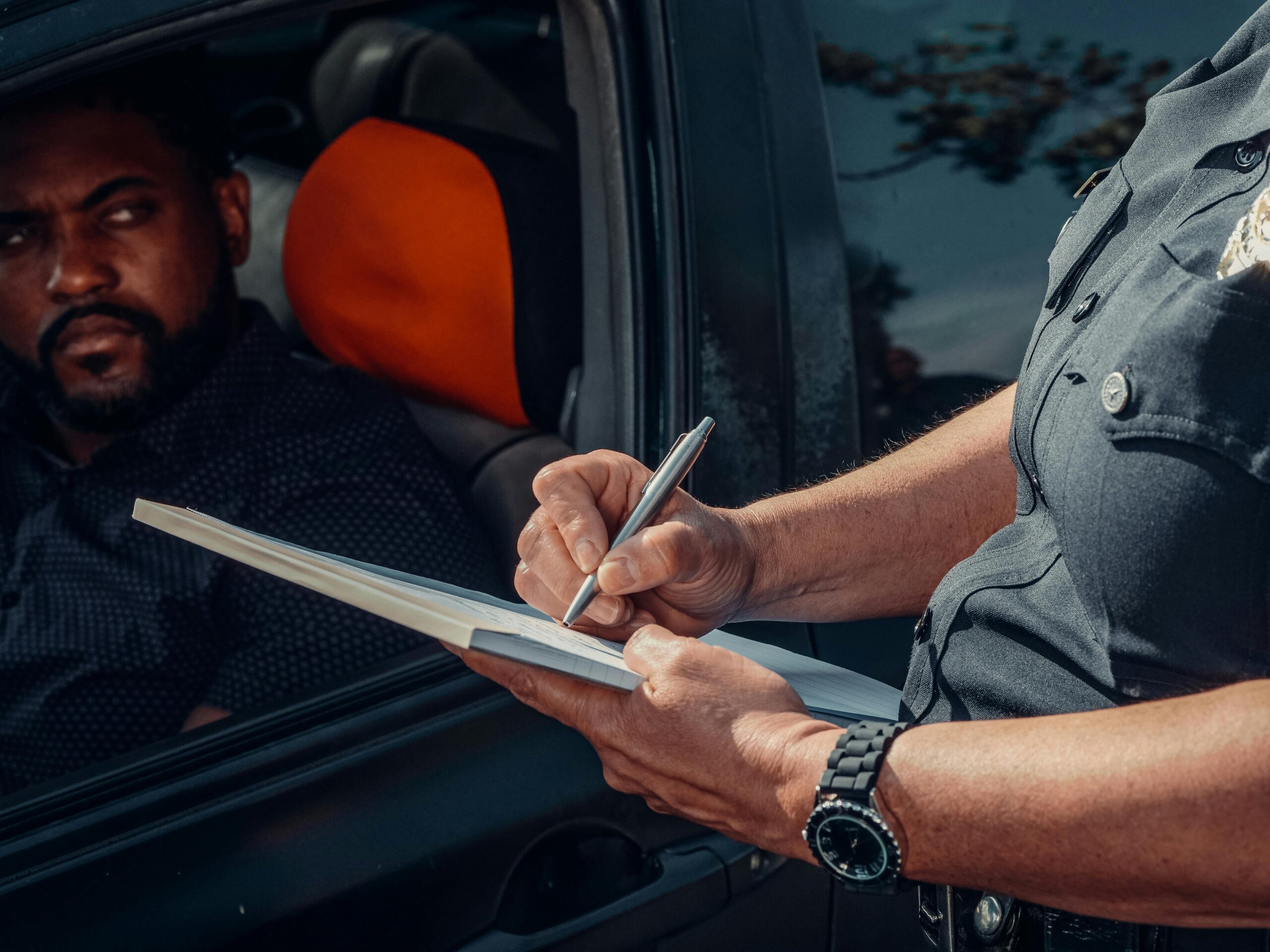
How Does the Law Define Right of Way CVC 525? California Vehicle Code 525 Explained
Understanding right of way laws is crucial for safe driving in California. California Vehicle Code Section 525 (CVC 525) provides the legal foundation for right of way privileges throughout the state. This comprehensive guide examines how does the law define right of way CVC 525, its practical applications, and what drivers need to know to navigate intersections and highways safely.
California Vehicle Code 525: The Legal Definition
California Vehicle Code Section 525 establishes the fundamental definition of right of way in the state. According to CVC 525, “Right-of-way is the privilege of the immediate use of the highway.” This concise legal definition forms the basis for all traffic right of way determinations in California.
Understanding the CVC 525 Right of Way Privilege
The California right of way law emphasizes that right of way is a privilege, not an absolute right. This distinction is critical because it means drivers cannot simply assume they have right of way in all situations. Instead, the privilege of immediate highway use must be evaluated based on specific circumstances and traffic conditions.
Key Components of the CVC 525 Definition:
- Privilege-based system: Right of way is granted as a privilege rather than an inherent right
- Immediate use: The definition focuses on immediate, current use of the roadway
- Highway application: The law applies to all highways, streets, and public roadways in California
How California Courts Interpret Right of Way Under CVC 525
California courts have consistently interpreted Vehicle Code Section 525 to establish a framework for determining traffic priority. The privilege of immediate highway use creates a legal hierarchy that helps resolve conflicts between different road users.
Judicial Interpretation of Right of Way Privilege
Courts recognize that the CVC 525 right of way definition requires analysis of specific traffic situations. The privilege of immediate use means that drivers must yield when circumstances dictate, even if they would normally have priority.
Legal Precedents Under CVC 525:
- Right of way privilege can be modified by traffic signals and signs
- Emergency vehicles have superior right of way privileges
- Pedestrians receive special consideration in crosswalk situations
- The privilege must be exercised with reasonable care and safety

Practical Applications of California Vehicle Code 525
The CVC 525 right of way definition applies to numerous traffic scenarios throughout California. Understanding these applications helps drivers make informed decisions and avoid accidents.
Intersection Right of Way Under CVC 525
At intersections, the privilege of immediate highway use follows established priority rules. The California traffic right of way system creates predictable patterns that help prevent conflicts between vehicles.
Intersection Priority Rules:
- Traffic signals override general right of way privileges
- Stop signs require drivers to yield the privilege to others
- Uncontrolled intersections follow vehicle arrival order
- Left turns must yield to oncoming traffic with right of way privilege
Pedestrian Right of Way and CVC 525
The California Vehicle Code 525 definition extends to pedestrian interactions. While the law primarily addresses vehicle privileges, pedestrian right of way receives special protection under related statutes that work in conjunction with CVC 525.
Pedestrian Considerations:
- Crosswalks create pedestrian right of way privileges
- Drivers must yield immediate highway use to pedestrians in marked crossings
- Unmarked crosswalks at intersections also grant pedestrian privileges
- Emergency situations may alter normal right of way determinations
CVC 525 and Traffic Enforcement
Law enforcement officers use California Vehicle Code 525 as the foundation for traffic citations and accident investigations. The right of way privilege definition helps determine fault and violations in various traffic scenarios.
Common Right of Way Violations
Understanding CVC 525 helps identify common right of way violations that result in traffic tickets and accidents. The privilege of immediate highway use creates clear standards for proper driving behavior.
Frequent Violation Types:
- Failure to yield at intersections
- Improper lane changes that interfere with others’ right of way privilege
- Running stop signs and ignoring traffic signals
- Blocking crosswalks and impeding pedestrian privileges
Right of Way Accident Investigations
When accidents occur, investigators examine how the CVC 525 right of way privilege applied to the specific situation. This analysis helps determine fault and liability in insurance claims and legal proceedings.
Relationship Between CVC 525 and Other Traffic Laws
California Vehicle Code 525 works in conjunction with numerous other traffic statutes to create a comprehensive right of way system. Understanding these connections provides a complete picture of California traffic law.
Related California Vehicle Code Sections
Several other CVC sections build upon the Section 525 definition to address specific right of way scenarios:
CVC 21800-21809: Detailed right of way rules for various situations CVC 21950-21971: Pedestrian right of way provisions CVC 22100-22113: Turn and lane change requirements CVC 21453: Traffic signal compliance
Integration with Municipal Traffic Ordinances
Local governments build upon the CVC 525 foundation when creating municipal traffic ordinances. The privilege of immediate highway use remains the underlying principle, but cities and counties may add specific regulations for local conditions.
Frequently Asked Questions (FAQs)
What exactly does CVC 525 say about right of way?
California Vehicle Code Section 525 defines right of way as “the privilege of the immediate use of the highway.” This means right of way is not an absolute right but rather a privilege that must be exercised responsibly and can be modified by traffic conditions, signals, and other factors.
Is right of way a legal right or a privilege under California law?
Under CVC 525, right of way is specifically defined as a privilege, not a legal right. This distinction is important because privileges can be limited, modified, or revoked based on circumstances, whereas rights are typically more absolute. The privilege-based system allows for flexibility in traffic situations.
How does the “immediate use” language in CVC 525 affect driving decisions?
The “immediate use” component means that right of way privilege applies to current, real-time traffic situations. Drivers cannot claim right of way based on future intentions or past positions. The privilege belongs to whoever has the immediate need to use that particular portion of the highway at that specific moment.
Can right of way privilege under CVC 525 be overridden by traffic signals?
Yes, traffic control devices like signals, stop signs, and yield signs can modify or override the general right of way privilege established in CVC 525. These devices create specific exceptions to the general rule and establish new priority systems for particular locations.
Does CVC 525 apply to pedestrians or just vehicles?
While CVC 525 primarily addresses vehicle right of way, the definition of “highway” in California law includes sidewalks and areas used by pedestrians. However, specific pedestrian right of way rules are typically found in other Vehicle Code sections that work alongside CVC 525.
How do courts interpret “privilege” versus “right” in right of way cases?
Courts interpret the privilege language to mean that drivers must exercise right of way reasonably and safely. Having the privilege doesn’t mean drivers can ignore safety or force their way through traffic. The privilege comes with the responsibility to use it appropriately.
What happens when two drivers both claim right of way privilege under CVC 525?
When conflicts arise, courts and traffic investigators examine the specific circumstances to determine who actually had the privilege of immediate highway use. Factors include traffic signals, signs, arrival time at intersections, and applicable traffic rules that modify the general CVC 525 principle.
Can emergency vehicles override normal right of way privileges?
Yes, emergency vehicles with active lights and sirens have superior right of way privileges that override normal CVC 525 applications. All other vehicles must yield the privilege of immediate highway use to emergency vehicles when legally required.
How does CVC 525 apply to highway merging situations?
In merging situations, the privilege of immediate highway use typically belongs to vehicles already on the main highway. Merging vehicles must yield this privilege, but highway drivers should also exercise reasonable care to allow safe merging when possible.
Are there exceptions to the CVC 525 right of way definition?
While CVC 525 provides the fundamental definition, numerous other Vehicle Code sections create specific exceptions and modifications. These include rules for school zones, construction areas, emergency situations, and special circumstances that alter normal right of way privileges.
How should drivers practically apply CVC 525 in daily driving?
Drivers should remember that right of way is a privilege that requires responsible exercise. Even when you have right of way privilege, you must drive defensively and be prepared to yield when safety requires it. The privilege comes with the duty to avoid accidents when reasonably possible.
Can municipalities modify CVC 525 right of way rules with local ordinances?
Local governments cannot override the basic CVC 525 definition, but they can create additional regulations that work within the state framework. Municipal ordinances typically add specific rules for local conditions while maintaining consistency with the state’s privilege-based system.
Conclusion: Understanding Right of Way Under California Law
California Vehicle Code 525 establishes right of way as the privilege of immediate highway use, creating a foundation for safe and orderly traffic flow throughout the state. This privilege-based system requires drivers to exercise right of way responsibly while remaining prepared to yield when circumstances demand it.
The CVC 525 definition emphasizes that right of way is not an absolute entitlement but rather a conditional privilege that must be balanced with safety considerations and specific traffic regulations. By understanding this fundamental principle, California drivers can navigate intersections, highways, and various traffic scenarios with greater confidence and safety.
Whether dealing with intersection conflicts, pedestrian crossings, or highway merging, the privilege of immediate highway use under CVC 525 provides clear guidance for determining traffic priority. Combined with related Vehicle Code sections and local traffic ordinances, this legal framework creates a comprehensive system for managing right of way throughout California’s complex transportation network.